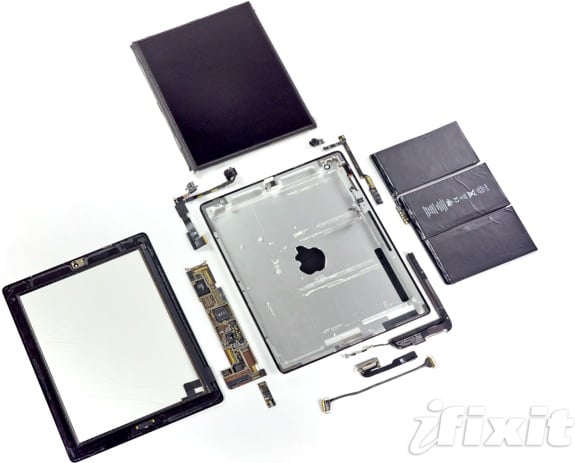Find Our Latest Video Reviews on YouTube!
If you want to stay on top of all of our video reviews of the latest tech, be sure to check out and subscribe to the Gear Live YouTube channel, hosted by Andru Edwards! It’s free!
Friday March 18, 2011 12:52 pm
Five critical iPad 2 components at risk after Japanese earthquake

The effects of the Japanese earthquake may affect Apple's production of the iPad 2, according to market researcher IHS iSuppli.
The firm said it believes that Apple's iPad 2 uses components from several manufacturers affected by the earthquake, as well as the reactors in the area which workers are attempting to keep intact, if not functioning.
Apple representatives were not able to be contacted after hours. The company has already delayed the iPad 2 launch in Japan following the earthquake in Japan a week ago, which has not been rated magnitude 9.0 by the U.S. Geological Service. The iPad 2, which went on sale in the U.S. last Friday, was scheduled to launch in Japan on March 25.
iSuppli said it had identified five parts sourced from Japanese suppliers whose supplies may be affected by the quake: NAND flash from Toshiba, dynamic random access memory (DRAM) made by Elpida Memory, an electronic compass from AKM Semiconductor, the touch screen overlay glass likely from Asahi Glass Co. and the system battery from Apple Japan Inc.
"While some of these suppliers reported that their facilities were undamaged, delivery of components from all of these companies is likely to be impacted at least to some degree by logistical issues now plaguing most Japanese industries in the quake zone," iSuppli said. "Suppliers are expected to encounter difficulties in getting raw materials supplied and distributed as well as in shipping out products. They also are facing difficulties with employee absences because of problems with the transportation system. The various challenges are being compounded by interruptions in the electricity supply, which can have a major impact on delicate processes, such as semiconductor lithography."
On Friday, crews raced to cool the reactor units at the Fukushima Dai-ichi facility, with water cannons, helicopters, and other methods to cool the reactor cores, which, if overheated, could begin melting, spewing dangerous amounts of radiation into the air. The power the plants normally supply to the region has also affected production.
iSuppli analysts also noted that aftershocks over magnitude 5.0 typically automatically halt production at the plants. Those quakes, at least off the east coast of the Honshu island, have been frequent daily occurrences for at least a week.
iSuppli did not confirm an
iSuppli noted that some of the components in the iPad 2 were easily replaced by similar products from other suppliers, including the NAND flash and DRAM. But the compass, touch screen overlay, and the system battery from Apple's own facility may not be swapped out without some redesign or additional testing, the firm said.
The largest problem may be the glass used in the iPad 2, although the source is not definitively known. iSuppli said it believes the glass used to be the Dragontrail Glass technology from Asahi Glass of Japan, which suffered damage at three facilities, iSuppli said.
The firm also believes Apple itself made its battery. In a followup to its previous teardown analysis of the iPad 2, IHS iSuppli said Wednesday that Apple had decreased the size of the iPad's battery while increasing the battery's energy density, thus making it smaller while maintaining the same battery life.
"Typically, battery cells are made at the site of assembly but because the iPad 2's lithium-ion polymer battery is unusually thin, it likely requires advanced battery cell manufacturing technologies that reside in Japan," said Wayne Lam, senior analyst, competitive analysis, at IHS.
The compass is another question mark, although AKM, Apple's suspected supplier, did not report damage. iSuppli said that AKM supplies could be affected by logistical issues, however.
"The calibration of electronic compasses is tricky for a number of reasons," said Jérémie Bouchaud, director and principal analyst for MEMS and sensors at IHS, in a statement. "Compasses are sensitive to electromagnetic interference. Furthermore, the iPad 2's compass works in close coordination with the tablet's accelerometer and gyroscope. This makes it impossible to simply replace one manufacturer's compass with another."
While the semiconductor supply disruptions are bad, they could have been worse; the recent buildup in global semiconductor inventory may serve to mitigate the impact of reduced supply from Japan, iSuppli said.
This article, written by Mark Hachman, originally appeared on PCMag.com and is republished on Gear Live with the permission of Ziff Davis, Inc.











